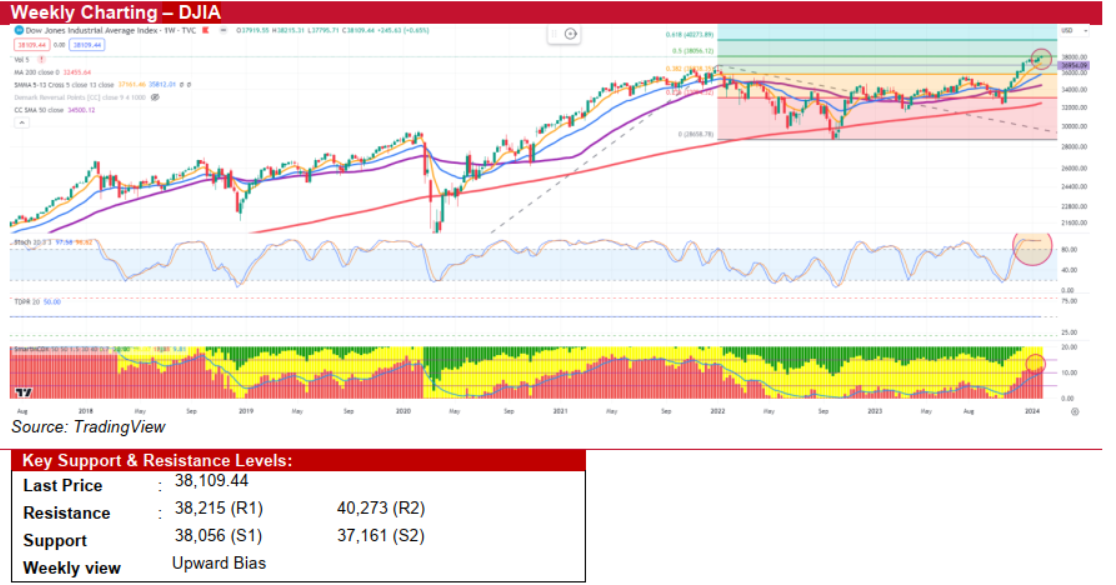Kenanga Research & Investment
Weekly Technical Highlights – Dow Jones Industrial Average (DJIA)
kiasutrader
Publish date: Mon, 29 Jan 2024, 11:17 AM

Dow Jones Industrial Average (DJIA) (Upward Bias)
- The stock market witnessed substantial gains last week. The DJIA increased by 0.65%, while the S&P 500 and Nasdaq Composite rose by 1.1% and 0.9%, respectively, although the Nasdaq closed lower in its weekly range. Midway through the earnings season, S&P 500 companies are reportedly on track for the lowest quarterly profit margins in over three years, with an average net profit margin of 10.7% for the 4Q. In the commodities market, U.S. crude oil prices saw a near 7% rise over the week, reaching over USD78 per barrel, the highest in about two months, amid declining U.S. crude supplies and ongoing Middle East tensions.
- This week is significant for U.S. financial markets, with a Federal Reserve policy meeting concluding on Wednesday and the monthly jobs report due on Friday. The Fed is expected to maintain interest rates, with market participants looking for clues about the timing of potential rate cuts. The jobs report will compare January's employment growth to December's unexpected rise of 216,000 jobs. On the corporate earnings front, major companies like Apple, Microsoft, Meta, Alphabet, Amazon, AMD, and NVO are set to release their 4Q earnings reports, making it a crucial week for investors.
- The DJIA's weekly uptrend is still in place, and stand firm above its resistance-turn-support level of 38,056 level, corresponding to its 50% Fibonacci extension level. While the ongoing market optimism suggests that the DJIA might extend its rally, any unexpected comment from the Fed or negative corporate earnings that arise from the tech giants could trigger significant sell signals.
- For the DJIA, critical resistance levels are set at its recent peak of 38,215 followed by 40,273 next. The immediate support level is found at its recent resistance-turn-support level at 38,056, with additional support around 37,161, aligning with the 5-week Simple Moving Average (SMA).
Source: Kenanga Research - 29 Jan 2024
More articles on Kenanga Research & Investment
Discussions
Be the first to like this. Showing 0 of 0 comments





















